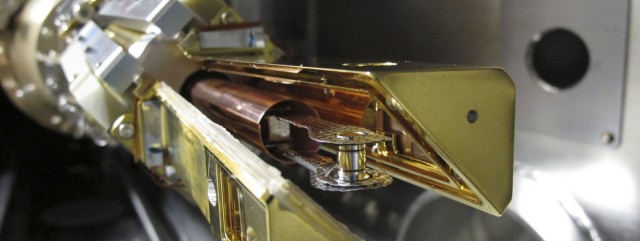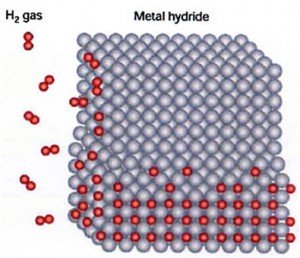Abandoning Science for a Circus Act
… from the Archives
…by Jeff Smith, Science Editor
When we think of nuclear power, there are usually just two options: fission and fusion. Fission, which creates huge amounts of heat by splitting larger atoms into smaller atoms, is what currently powers every nuclear reactor on Earth.
Fusion is the opposite, creating vast amounts of energy by fusing atoms of hydrogen together, but we’re still many years away from large-scale, commercial fusion reactors. (See: 500MW from half a gram of hydrogen: The hunt for fusion power heats up.)
LENR is absolutely nothing like either fission or fusion. Where fission and fusion are underpinned by strong nuclear force, LENR harnesses power from weak nuclear force — but capturing this energy is difficult. So far, NASA’s best effort involves a nickel lattice and hydrogen ions. The hydrogen ions are sucked into the nickel lattice, and then the lattice is oscillated at a very high frequency (between 5 and 30 terahertz).
This oscillation excites the nickel’s electrons, which are forced into the hydrogen ions (protons), forming slow-moving neutrons. The nickel immediately absorbs these neutrons, making it unstable. To regain its stability, the nickel strips a neutron of its electron so that it becomes a proton — a reaction that turns the nickel into copper and creates a lot of energy in the process.
The key to LENR’s cleanliness and safety seems to be the slow-moving neutrons. Whereas fission creates fast neutrons (neutrons with energies over 1 megaelectron volt), LENR utilizes neutrons with an energy below 1eV — less than a millionth of the energy of a fast neutron.
Whereas fast neutrons create one hell of a mess when they collide with the nuclei of other atoms, LENR’s slow neutrons don’t generate ionizing radiation or radioactive waste. It is because of this sedate gentility that LENR lends itself very well to vehicular and at-home nuclear reactors that provide both heat and electricity.
According to NASA, 1% of the world’s nickel production could meet the world’s energy needs, at a quarter of the cost of coal. NASA also mentions, almost as an aside, that the lattice could be formed of carbon instead of nickel, with the nuclear reaction turning carbon into nitrogen. “You’re not sequestering carbon, you’re totally removing carbon from the system,” says Joseph Zawodny, a NASA scientist involved with the work on LENR.
So why don’t we have LENR reactors yet? Just like fusion, it is proving hard to build a LENR system that produces more energy than the energy required to begin the reaction. In this case, NASA says that the 5-30THz frequency required to oscillate the nickel lattice is hard to efficiently produce.
As we’ve reported over the last couple of years, though, strong advances are being made in the generation and control of terahertz radiation. Other labs outside of NASA are working on cold fusion and LENR, too: “Several labs have blown up studying LENR and windows have melted,” says NASA scientist Dennis Bushnell, proving that “when the conditions are ‘right’ prodigious amounts of energy can be produced and released.”
I think it’s still fairly safe to say that the immediate future of power generation, and meeting humanity’s burgeoning energy needs, lies in fission and fusion (See: Nuclear power is our only hope.) But who knows: With LENR, maybe there’s hope for cold fusion yet
_______________________________
I am sad – horrified really – to learn that some NASA scientists have caught cold fusion madness. As is so often the case with companies and research groups that get involved in this fruitless enterprise, they tend to make their case by first pointing out how nice it would be to have a clean, cheap, safe, effectively limitless source of power. Who could say no to that?

| NASA Langley scientists are hoping to build spacecraft powered with cold fusion. Image courtesy of NASA. |
Here’s a word of caution: anytime anyone, especially a scientist, starts by telling you about glorious, nigh-unbelievable futuristic applications of their idea, be very, very skeptical.
NASA, for example, is promoting a cold fusion scheme that they say will power your house and car, and even a space plane that is apparently under development, despite the fact that cold fusion power supplies don’t exist yet and almost certainly never will. And if that’s not enough, NASA’s brand of cold fusion can solve our climate change problems by converting carbon directly into nitrogen.
The one hitch in the plan, unfortunately, is that they’re going to have to violate some very well established physics to make it happen. To say the least, I wouldn’t count on it.
To be clear, cold fusion does indeed work – provided you use a heavier cousin of the electron, known as a muon, to make it happen. There is no question that muon-catalyzed fusion is a perfectly sound, well-understood process that would be an abundant source of energy, if only we could find or create a cheap source of muons. Unfortunately, it takes way more energy to create the muons that go into muon-catalyzed fusion than comes out of the reaction.
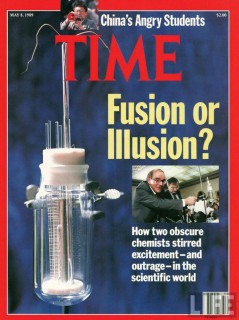
Cold fusion that doesn’t involve muons, on the other hand, doesn’t work. In fact, the very same physics principles that make muon-catalyzed fusion possible are the ones that guarantee that the muon-less version isn’t possible.
To get around the problem presented by nature and her physical laws, NASA’s scientists have joined other cold fusion advocates in rebranding their work under the deceptively scientific moniker LENR (Low Energy Nuclear Reactions), and backing it up with various sketchy theories.
The main theory currently in fashion among cold fusion people is the Widom-Larsen LENR theory, which claims that neutrons can result from interactions with “heavy electrons” and protons in a lump of material in a cold fusion experiment.
These neutrons, so the argument goes, can then be absorbed in a material (copper is a popular choice) which becomes unstable and decays to form a lighter material (nickel, assuming you start with copper), giving off energy in the process.
At least one paper argues that Widom and Larsen made some serious errors in their calculations that thoroughly undermine their theory. But even if you assume the Widom-Larsen paper is correct, then there should be detectable neutrons produced in cold fusion experiments. (Coincidentally, it’s primarily because no neutrons were detected in the original cold fusion experiments of Pons and Fleischmannthat physicists were first clued into the fact no fusion was happening at all.)
Some proponents claim that the neutrons produced in the Widom-Larsen theory are trapped in the sample material and rapidly absorbed by atoms. But because the neutrons are formed at room temperature, they should have energies typical of thermal neutrons, which move on average at about 2000 meters a second. That means that a large fraction of them should escape the sample, and be easily detectable.
Those that don’t escape, but instead are absorbed by atoms would also lead to detectable radiation as the neutron-activated portions of the material decays. Either way, it would be pretty dangerous to be near an experiment like that, if it worked. The fact that cold fusion researchers are alive is fairly good evidence that their experiments aren’t doing what they think they’re doing.
But if you’re willing to believe Widom-Larsen, and you suspend your disbelief long enough to accept that the neutrons exclusively stay in the sample for some reason, and that the energy released as a result dosn’t include any radiation, it should still be pretty easy to determine if the experiments work. All you’d have to do is look for nickel in a sample that initially consisted of pure copper. If published proof exists, I haven’t found it yet (please send links to peer-reviewed publications, if you’ve seen something).
Instead, people like NASA’s Dennis Bushnell are happy with decidedly unscientific evidence for cold fusion. Among other things, Bushnell notes that ” . . . several labs have blown up studying LENR and windows have melted, indicating when the conditions are “right” prodigious amounts of energy can be produced and released.”
Of course, chemical reactions can blow things up and melt glass too. There’s no reason to conclude nuclear reactions were responsible. And it certainly isn’t publishable proof of cold fusion. Considering that most of these experiments involve hydrogen gas and electricity, it’s not at all surprising that labs go up in flames on occasion.
On a related note, a recent article in Forbes magazine reported that Lewis Larsen, of the above-mentioned Widom-Larsen theory, claims that measurements of the isotopes of mercury in compact fluorescent bulbs indicate that LENR reactions are taking place in light fixtures everywhere. If only it were true, it would offer serious support for the Widom-Larsen theory.
It’s too bad the paper Larsen cites says nothing of the sort. According to an article in Chemical and Engineering News, the scientists who performed the study of gas in fluorescent bulbs were motivated by the knowledge that some mercury isotopes are absorbed in the glass of the bulbs more readily than others. The isotope ratio inside isn’t changing because of nuclear reactions, but instead by soaking into the glass at different rates. Sorry Lewis Larsen, nice try.
Added note: I want to thank Steven Corneliussen of Physics Today for his timely summary of the recent cold fusion coverage in Forbes. I am even more grateful to Jeff McMahon of Forbes for his shockingly credulous reporting of the NASA Langley cold fusion program – it would have been nice if he’d interviewed someone with conventional views of physics, but at least he got the word out.
____________________________
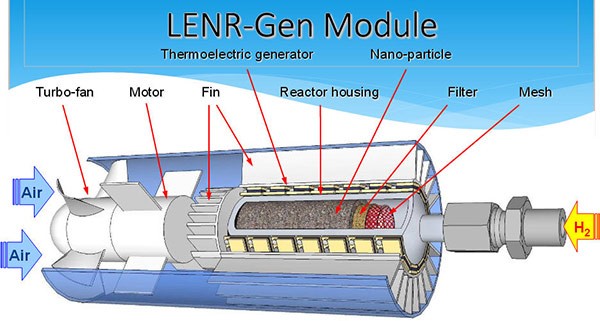
Tiny Nuclear Reactions Inside Compact Fluorescent Bulbs?
TECH 3/14/2013

Harmless low-energy nuclear reactions may be taking place routinely inside of compact fluorescent lightbulbs, according to a physicist whose theories have NASA researchers abuzz with the prospect of cheap, non-polluting energy.
Nuclear reactions may be responsible for an unusual fingerprint of mercury isotopes in used fluorescents that can identify environmental pollution from the bulbs, said Lewis Larsen, a Chicago physicist associated with the Widom-Larsen Theory, which explores slow nuclear reactions among elements that are not radioactive.
“Unbeknownst to the general public, dynamically active nuclear processes are presently occurring in tens of millions of households worldwide,” Larsen told me.
“Fortunately, there aren’t any radiological health risks associated with CFLs because no hard radiation is emitted from them, ” Larsen said, “ and no environmentally hazardous, long-lived radioactive isotopes are typically created by LENRs (low energy nuclear reactions).”
Larsen has suspected low energy nuclear reactions occur in CFLs, he told me, and is encouraged by a February study of used bulbs that found isotopes of mercury that more conventional theories cannot explain.
The authors of that study analyzed used fluorescent bulbs looking for a unique fingerprint of mercury isotopes. If they could find a unique fingerprint, researchers could identify mercury pollution in the environment that comes from discarded fluorescents:
“All fluorescent lamps use mercury (Hg) and can be a source of Hg to the environment when broken,” write the authors, led by Chris Mead of Arizona State University’s Global Institute of Sustainability, in a February issue of Environmental Science and Technology (subscription required).
As compact fluorescents command a larger share of the lighting market, the researchers expect mercury pollution from the bulbs to increase:
“The share of atmospheric anthropogenic Hg emissions represented by fluorescent lightbulbs in the United States is 1–5 percent. Only a third of fluorescent lightbulbs are recycled. As fluorescent lighting continues to supplant incandescent lighting, and as emissions from large point sources of Hg, such as coal-fired power plants and municipal waste incinerators are reduced, fluorescents will become an increasingly important source of Hg to the environment. Therefore, a method to detect and quantify Hg derived from fluorescents would be very useful.”
The researchers found their unique fingerprint for mercury from fluorescent bulbs. But they can’t explain why it’s so unique:
“The trapped Hg of used CFL show unusually large isotopic fractionation (the distribution of mercury into its various isotopes), the pattern of which is entirely different from that which has been observed in previous Hg isotope research aside from intentional isotope enrichment.”
Larsen believes he knows why the mercury isotopes in used CFLs are different:
“When viewed through the conceptual lens of the Widom-Larsen theory, Mead et al.’s carefully collected Hg isotope data suggests that low energy nuclear reaction (LENR) transmutations may actually be occurring at extremely low rates in CFLs during normal operation,” he said.
And that should make the idea of home nuclear reactors less frightening, Larsen said. “If this outstanding new data is substantiated by further experimentation, it provides yet more proof that LENRs are likely to be a truly ‘green,’ safe nuclear technology.”
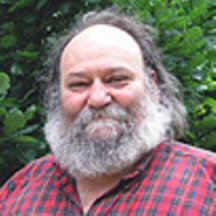
Larsen hopes to demonstrate that low-energy nuclear reactions are safe, green and commonplace in part to distinguish them from fission reactions that produce dangerous ionizing radiation in conventional reactors. He has found evidence of LENRs occurring in lithium-ion batteries, catalytic converters, and naturally in bacterial processes and lightning.
Many researchers, including NASA scientists, are working on low-energy nuclear reactors that use non-hazardous fuels like nickel and hydrogen to produce energy and non hazardous by-products, like copper. I discuss the reactors in more detail in a prior post, NASA: A Nuclear Reactor To Replace Your Water Heater.
But if low energy nuclear reactions are so commonplace, why haven’t scientists noticed them before? In part because they haven’t looked. LENR activity is subtle, according to Larsen, and it “can only be readily detected and measured through the use of extraordinarily sensitive mass spectroscopy techniques on stable isotopes.”
“Consequently, for nearly 100 years LENR processes have effectively been hidden in plain sight from the vast majority of the scientific community.”
Editing: Jim W. Dean
_________________________________

Gordon Duff posted articles on VT from 2008 to 2022. He is a Marine combat veteran of the Vietnam War. A disabled veteran, he worked on veterans and POW issues for decades.
Gordon is an accredited diplomat and is generally accepted as one of the top global intelligence specialists. He manages the world’s largest private intelligence organization and regularly consults with governments challenged by security issues.
Duff has traveled extensively, is published around the world, and is a regular guest on TV and radio in more than “several” countries. He is also a trained chef, wine enthusiast, avid motorcyclist, and gunsmith specializing in historical weapons and restoration. Business experience and interests are in energy and defense technology.
ATTENTION READERS
We See The World From All Sides and Want YOU To Be Fully InformedIn fact, intentional disinformation is a disgraceful scourge in media today. So to assuage any possible errant incorrect information posted herein, we strongly encourage you to seek corroboration from other non-VT sources before forming an educated opinion.
About VT - Policies & Disclosures - Comment Policy

